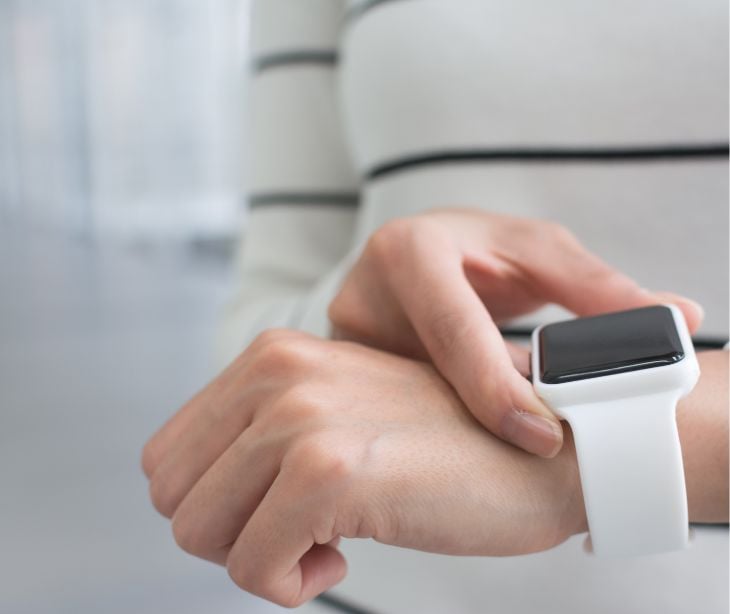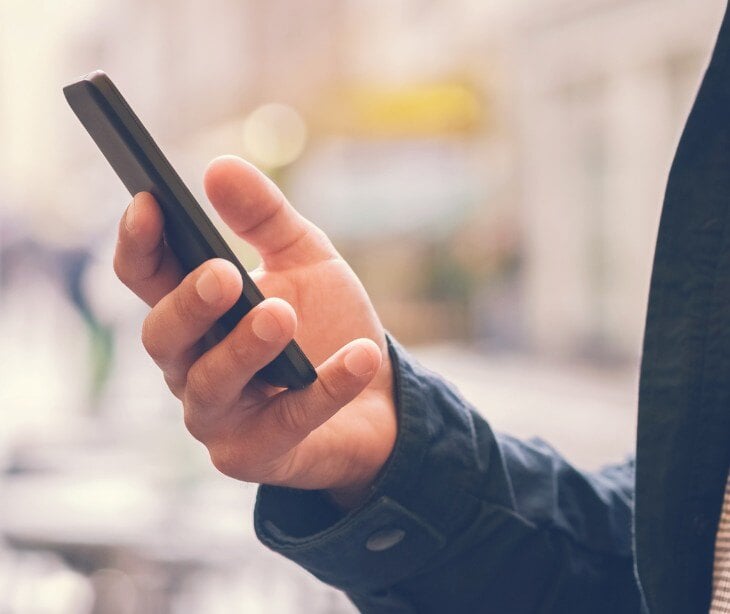3 min read
Why texting is the best communication method for wearable technology
Kirsten Peremore
April 23, 2024

Wearable devices have seen a substantial increase in data traffic—from 0.9 exabytes in 2015 to 3.1 exabytes in 2020. Text messaging effectively manages the high volume of data generated by wearables and provides swift and energy-efficient means of data transfer.
The application of wearable technology in healthcare
Wearable technology in healthcare provides both patients and doctors with powerful tools for better health management. Devices such as fitness trackers, smartwatches, and specialized sensors can continuously measure vital signs like heart rate, blood pressure, and oxygen levels.
This real-time data collection helps individuals stay informed about their health and encourages proactive lifestyle choices. For healthcare professionals, wearables offer a continuous stream of patient data, enabling more precise diagnoses and personalized treatment plans.
The easy integration between text messaging and wearable technology
A Telemedicine and e-Health study on the topic of the use of SMS and wearable technology offered the following insight, “The ultimate goal with these devices and apps is to provide real-time feedback to patients so that they actually see data that illustrates how destructive behaviors impact them physically, providing additional motivation to more proactively manage their health.”
Text messaging's integration with wearable technology in healthcare settings offers a remarkably effective communication bridge between patients and healthcare providers. This integration operates by linking wearable devices such as smartwatches and fitness bands directly to a healthcare provider's management system through secure and encrypted channels. This allows for the automatic push of urgent notifications such as medication reminders, appointment alerts, and personalized health advice directly to the patient's wrist.
The technical simplicity behind text messaging means it can be effortlessly implemented on devices with limited computational power and storage capacity. This is particularly necessary in healthcare where consistent functionality can be life-saving. The ability to quickly glance at health updates or receive prompts for action (like taking medication or checking blood sugar levels) without needing to interact extensively with a device is a boon for patients, especially those with disabilities or reduced dexterity.
The discrete nature of receiving texts allows patients to manage their health privately without drawing attention to their condition, preserving their dignity and independence. The low-bandwidth requirement of text messaging compared to data-intensive services like video calls or online consultations ensures that connectivity issues are minimal.
See also: How HIPAA compliant text messaging can help chronic pain management
The steps to ensure HIPAA compliant text messaging when using wearable technology
In combination with the use of HIPAA compliant text messaging services to communicate with patients, providers can use some of the following steps to navigate wearable technology and wearable devices.
- Use time-limited access codes: Implement systems where devices need a new, temporary code each time they connect to the network. These codes ensure that only authorized devices can access sensitive information at any given time, enhancing security against unauthorized use.
- Adjust security based on context: Set up systems that evaluate how and where the wearable device is being used—whether within a hospital or at a public cafe—and adjust security measures accordingly. For example, accessing patient data from outside the hospital might require additional verification steps.
- Keep wearable data separate: Use a dedicated network for wearable devices within healthcare facilities to keep data from these devices isolated from other types of data traffic. This helps prevent potential cyber threats from spreading across systems.
- Monitor for unusual activity: Employ tools that learn and monitor normal usage patterns and can alert you to any unusual actions, such as accessing patient information at strange hours, which could indicate a security breach.
- Manage encryption keys carefully: Handle encryption keys—the codes that lock and unlock data—with strict guidelines. Regularly change these keys and ensure they aren't embedded in the software, making it harder for hackers to decrypt confidential information.
- Develop with compliance in mind: When creating apps for wearable devices, use tools and software libraries designed to automatically handle many aspects of privacy and security compliance. This reduces the chance of accidentally creating security flaws.
- Adopt a zero trust policy: Treat every access request with skepticism. No user or device should have access to data without proper verification, regardless of whether they are inside or outside the network.
- Educate users regularly: Offer ongoing training for all users, including how to identify and handle potential security threats like phishing. Conduct regular drills or simulations to keep everyone sharp and aware of how to handle suspicious activities.
See also: Using HIPAA compliant text messaging to increase patient self-efficacy
FAQs
How does text messaging on wearable devices impact battery life compared to other forms of communication?
Text messaging typically consumes less battery on wearable devices compared to data-intensive communications like video or voice calls due to its lower processing and display requirements.
Can text messaging on wearable devices integrate with all mobile operating systems?
While most wearable devices support text messaging integration, compatibility can vary, especially between different mobile operating systems and older versions.
What are the limitations in text message formatting on wearable devices?
Wearable devices often have restrictions on text message formatting, limiting the use of rich media, complex fonts, or large image files due to smaller screen sizes and simplified interfaces.
Subscribe to Paubox Weekly
Every Friday we'll bring you the most important news from Paubox. Our aim is to make you smarter, faster.




